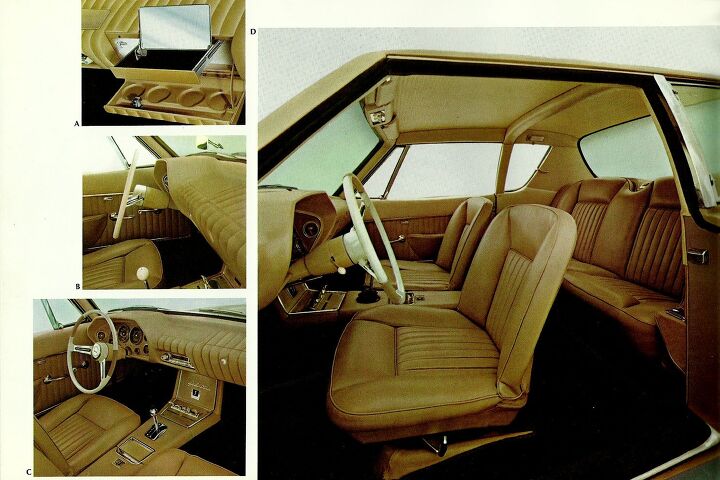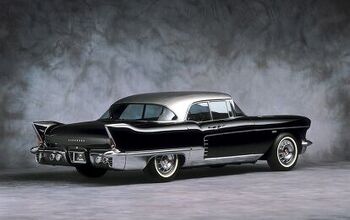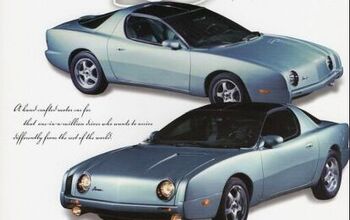Rare Rides: The Studebaker Avanti Story, Part I

Today’s Rare Ride is a design legend that was built for a very short while by Studebaker in South Bend, Indiana. One of those cars which just wouldn’t die, its two-year history of original manufacture was followed by about 43 years of sporadic independent production.
Onward, to Avanti!
In the early Sixties as the combined Studebaker-Packard company headed toward its final days, it commissioned an all-new coupe to succeed the various Hawk models marketed mostly by Studebaker and for a short while by Packard. The last of these was the Gran Turismo Hawk which concluded production in 1964, but it was essentially the same car Studebaker sold as the Starliner starting in 1953.
Said Starliner was a design by Raymond Loewy and Associates and the firm was hired once more to draw up a new coupe called Avanti. Heading a different direction to the Hawk, Avanti was aerodynamic, smooth, technologically advanced, and very fast. The new president of Studebaker, Sherwood Egbert, doodled a personal luxury coupe on the back of an envelope during a plane journey in 1961. He dreamt his company might throw down competition to Ford’s Thunderbird. Loewy filled in the design blanks, and the now-famous luxury coupe entered production in 1962. It was immediately notable for its sleek looks and considerable performance.
Fitted as standard to the Avanti was a 4.7-liter V8, which was good for 240 horsepower in standard guise. When equipped with the optional supercharger, the engine produced a whopping 289 horses. Paired to a three- or four-speed manual or a three-speed automatic, Avanti had a top speed of over 178 miles per hour from the factory. Studebaker took the Avanti to Bonneville Salt Flats, where it broke 29 world speed records. Avanti was hauled to a stop by Dunlop disc brakes at the front, a first in an American production car. It was also one of the earliest designs to feature a grille-free facade. The Avanti was light because it was made of fiberglass, its body produced in Ashtabula, Ohio by the same company that made the Corvette’s panels in 1953. Though steel was more desirable, it would’ve been too complex and too expensive given the Avanti’s shape.
At its debut on April 26, 1962, Studebaker proclaimed the Avanti “America’s most advanced automobile.” Excited orders for the Avanti poured forth. And though Studebaker planned to sell 20,000 its first year, there were several production issues at Ashtabula. Problems with fit and finish meant big delays, and reservation holders pulled out – probably to go buy a Thunderbird. As a result Studebaker made only 1,200 Avantis in the first year. Its second and final production year in 1963 less than 4,600 were completed. Studebaker closed down Avanti production on December 20th that year, and the company closed entirely in November 1967.
But the Avanti didn’t go away! Studebaker sold the tooling and space in its plant to two Studebaker dealers who almost immediately continued Avanti production. More on that in Part II.
[Images: Studebaker]

Interested in lots of cars and their various historical contexts. Started writing articles for TTAC in late 2016, when my first posts were QOTDs. From there I started a few new series like Rare Rides, Buy/Drive/Burn, Abandoned History, and most recently Rare Rides Icons. Operating from a home base in Cincinnati, Ohio, a relative auto journalist dead zone. Many of my articles are prompted by something I'll see on social media that sparks my interest and causes me to research. Finding articles and information from the early days of the internet and beyond that covers the little details lost to time: trim packages, color and wheel choices, interior fabrics. Beyond those, I'm fascinated by automotive industry experiments, both failures and successes. Lately I've taken an interest in AI, and generating "what if" type images for car models long dead. Reincarnating a modern Toyota Paseo, Lincoln Mark IX, or Isuzu Trooper through a text prompt is fun. Fun to post them on Twitter too, and watch people overreact. To that end, the social media I use most is Twitter, @CoreyLewis86. I also contribute pieces for Forbes Wheels and Forbes Home.
More by Corey Lewis
Latest Car Reviews
Read moreLatest Product Reviews
Read moreRecent Comments
- ToolGuy The only way this makes sense to me (still looking) is if it is tied to the realization that they have a capital issue (cash crunch) which is getting in the way of their plans.
- Jeff I do think this is a good thing. Teaching salespeople how to interact with the customer and teaching them some of the features and technical stuff of the vehicles is important.
- MKizzy If Tesla stops maintaining and expanding the Superchargers at current levels, imagine the chaos as more EV owners with high expectations visit crowded and no longer reliable Superchargers.It feels like at this point, Musk is nearly bored enough with Tesla and EVs in general to literally take his ball and going home.
- Incog99 I bought a brand new 4 on the floor 240SX coupe in 1989 in pearl green. I drove it almost 200k miles, put in a killer sound system and never wish I sold it. I graduated to an Infiniti Q45 next and that tank was amazing.
- CanadaCraig As an aside... you are so incredibly vulnerable as you're sitting there WAITING for you EV to charge. It freaks me out.






































Comments
Join the conversation
Never an Avanti, but I do have fond memories of one of the Canadian built 65 or so Lark wagons that my dad bought used during the late 60's. Cute car with a GM 289 and a sliding hatch roof at the rear. Dad didn't do quite what you'd have liked about brake adjustment, though. Sitting at a stoplight on a steeper-than-you'd-like downhill about 50 yards from the local river, the brake pedal sank suddenly to the floor. As a 14 year old, I'd been doing high school weights and could leg press 400 lb: neither that nor pumping the pedal quite solved the problem. I was lucky enough to quickly discover the value of parking pawls and how a car can ring back and forth once you engage one while in motion...
Four postings on the Avanti and I cannot recall seeing one mention of Andy Granatelli. Must be some sort of generation gap as his name and the Avanti were closely attached for a number of years.